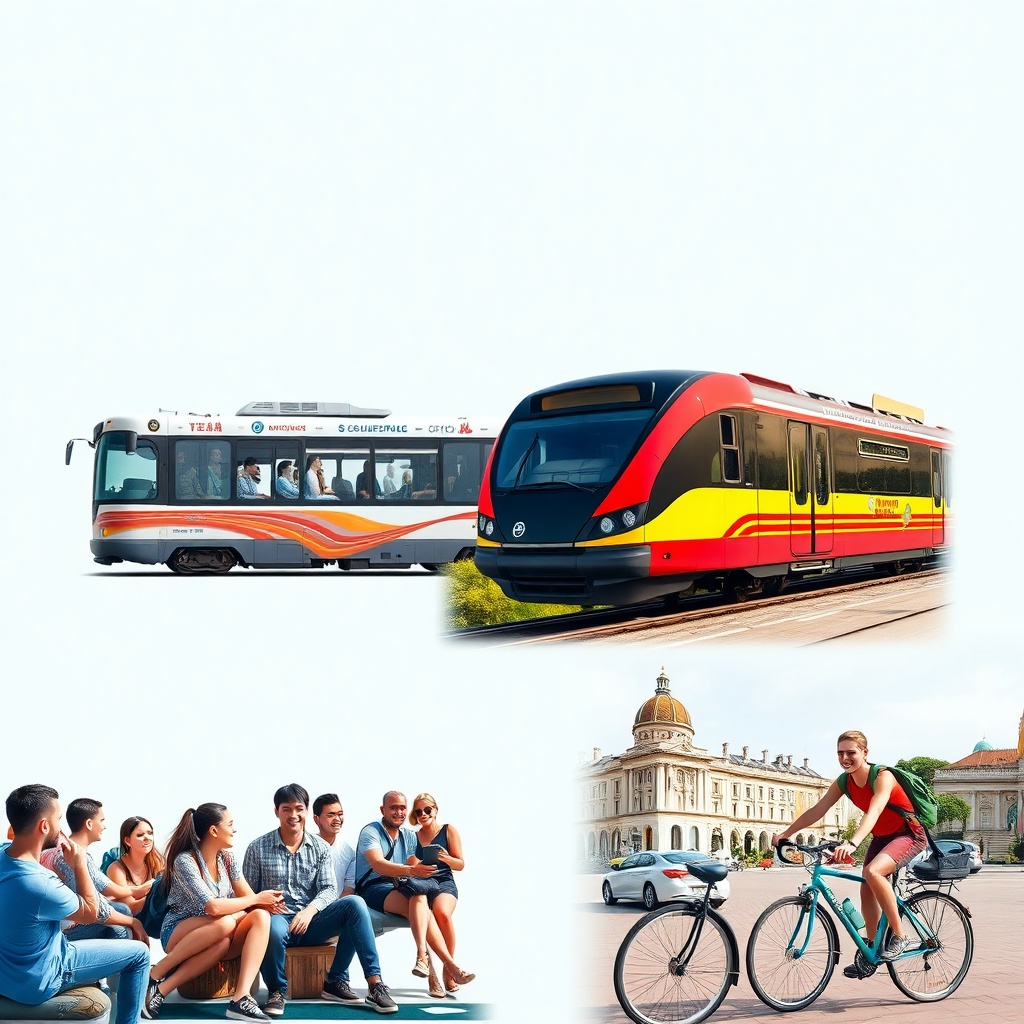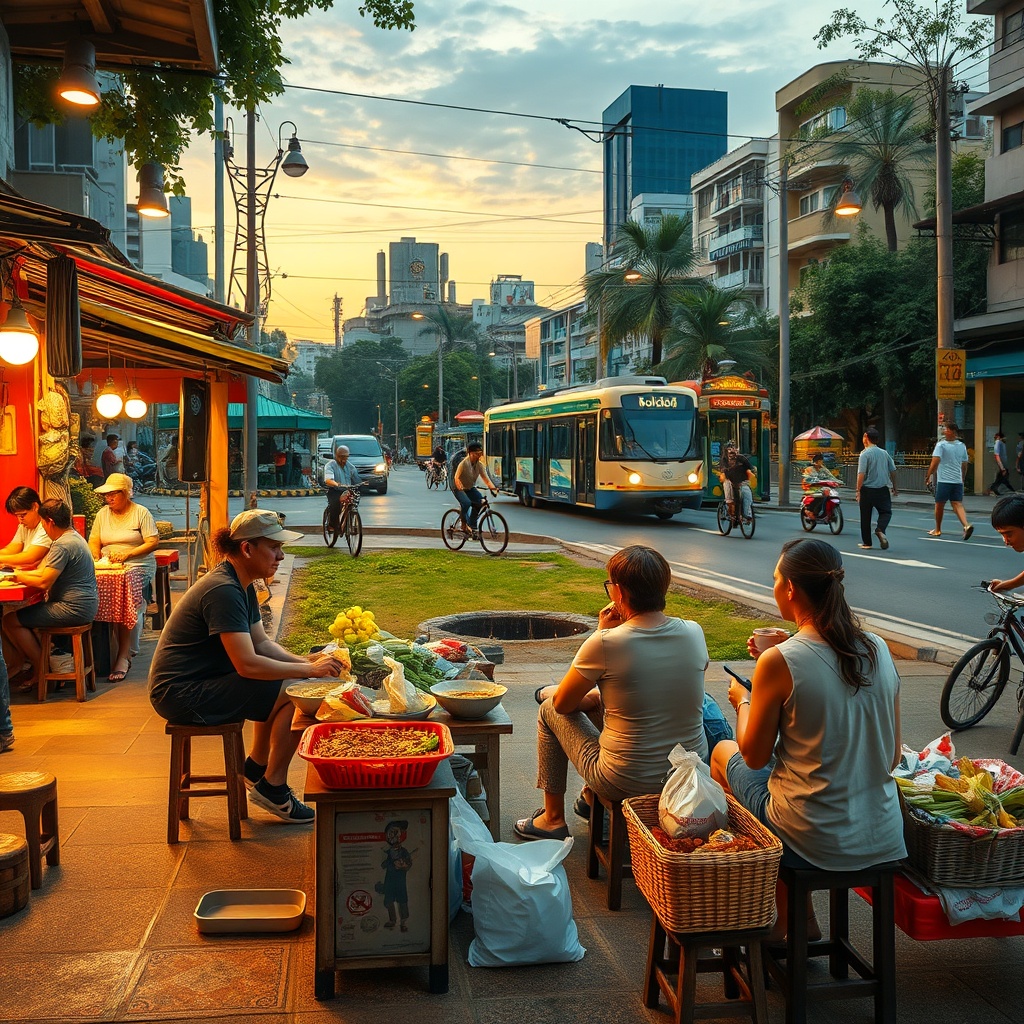Around-the-World Cost Savings Strategy for Beginners to Follow
Are you dreaming of circumnavigating the globe on a tight budget, but fear the costs will crush your wanderlust before your plane even takes off? Here’s the game-changing truth: Traveling the world doesn’t require emptying your bank account. The secret isn’t in compromising your experiences, but in mastering the art of cost savings. In the adventure ahead, we’ll journey through practical, beginner-friendly strategies honed by seasoned budget globetrotters. Get ready to discover how flexibility, smart planning, local hacks, and mindful spending can stretch your money and unlock the world’s wonders—all without missing out on the magic of each destination. Whether you’re a first-time backpacker or simply curious about making your money work harder as you cross continents, this guide is the treasure map you need. Let’s embark on a transformative adventure that proves global exploration can be life-changing and affordable—you just need the right plan. Ready to become a confident, savvy traveler? Read on and let’s save big, together!

One of the most powerful cost-saving strategies for beginner travelers is to embrace flexibility—both in your travel dates and your choice of destinations. This simple mindset shift can unlock a world of savings and unexpected adventures.
Why is flexibility so effective? Airfare and accommodation prices fluctuate dramatically depending on the season, day of the week, and even the time of booking. By keeping your schedule open, you can take advantage of these fluctuations and snag the best deals.
How to Put Flexibility Into Practice:
- Use Fare Comparison Tools: Websites and apps like Google Flights, Skyscanner, and Kayak allow you to compare prices across entire months. Look for the cheapest days to fly and consider shifting your plans accordingly.
- Be Open to Alternative Destinations: Instead of locking in one city or country, create a shortlist of places you’d love to visit. Sometimes, a nearby city or a less popular destination offers similar experiences at a fraction of the cost.
- Travel Off-Peak: Avoid major holidays, school vacation periods, and local festivals unless they are your main reason for visiting. Traveling during shoulder seasons or mid-week can result in significant savings on flights and hotels.
- Set Fare Alerts: Many travel platforms let you set alerts for price drops. This way, you can book when prices are at their lowest, rather than when you first feel the urge to travel.
| Flexible Approach | Potential Savings | Extra Benefits |
|---|---|---|
| Flying mid-week instead of weekends | Up to 40% off airfare | Less crowded airports |
| Visiting off-season destinations | 30-60% off hotels | Authentic local experiences |
| Booking last-minute deals | 20-50% off package tours | Surprise adventures |
Story Insight: The Power of Flexibility ▼
Let’s walk through a classic 8-stage story, inspired by Dan Harmon’s story circle, to see how flexibility can transform your travel experience and budget:
- You: You dream of exploring the world but worry about the high costs.
- Need: You want to travel affordably and see as much as possible.
- Go: You start researching flights and notice that prices vary wildly depending on dates and destinations.
- Search: You experiment with different dates and cities, using fare comparison tools and setting alerts.
- Find: You discover a flight to Portugal in May is half the price of one to France in July. You decide to be flexible and book the cheaper option.
- Take: You embrace the adventure, exploring a new country you hadn’t considered before.
- Return: You come home with amazing memories, having spent far less than expected.
- Change: You realize that flexibility is the key to affordable, fulfilling travel—and you’re ready to plan your next trip with an open mind!
Being flexible isn’t just about saving money—it’s about opening yourself up to new possibilities. Sometimes, the best journeys are the ones you never planned. So next time you’re dreaming of a getaway, let your dates and destinations be as open as your sense of adventure. Your wallet—and your soul—will thank you.
Keywords: flexible travel, cost-saving strategies, airfare deals, travel planning, budget travel

Traveling around the world is a dream for many, but the costs can quickly add up—especially when it comes to transportation. Mastering affordable transportation options is the cornerstone of any effective cost savings strategy for beginners. Let’s embark on a journey through the essential stages of affordable travel, using the classic storytelling structure to guide you.
1. The Ordinary World: Facing the Costly Status Quo
Most first-time travelers assume that planes, taxis, and rental cars are the only ways to get around. However, these options can eat up your budget fast. The good news? There are countless alternatives that can save you hundreds, if not thousands, of dollars on your trip.
2. The Call to Adventure: Seeking Alternatives
Once you realize the high costs of conventional travel, you’re motivated to seek cheaper options. This is your call to adventure: to research and embrace public transportation, rideshares, bicycles, and even walking. These choices not only save money but also offer authentic local experiences.
3. Refusal of the Call: Overcoming Fears and Doubts
It’s natural to feel hesitant about navigating unfamiliar bus or train systems. Maybe you worry about safety, language barriers, or getting lost. But remember, every seasoned traveler started as a beginner. With a little preparation, you can overcome these fears.
4. Meeting the Mentor: Learning from Experts
Seek advice from travel blogs, online forums, and local guides. These mentors offer invaluable tips on how to buy tickets, read schedules, and avoid common pitfalls. Many apps, like Rome2Rio or Google Maps, can help you plan routes and compare costs in real time.
5. Crossing the Threshold: Taking the First Step
Book your first overnight bus, hop on a local train, or rent a city bike. The first step is always the hardest, but it’s also the most rewarding. You’ll quickly discover that these affordable options are often more convenient and enjoyable than you expected.
6. Tests, Allies, and Enemies: Navigating Challenges
As you travel, you’ll face challenges: delayed buses, crowded trains, or confusing ticket machines. But you’ll also find allies—fellow travelers and helpful locals—who can guide you. Every challenge is a learning opportunity, making you a more confident and resourceful traveler.
7. The Reward: Enjoying Savings and Experiences
With each successful journey, you’ll see your travel budget stretch further. The money you save on transportation can be spent on unique experiences, delicious food, or even extending your trip. Plus, you’ll gain a deeper understanding of each destination by traveling as locals do.
8. The Return: Sharing Your Wisdom
Once you’ve mastered affordable transportation, share your insights with others. Your story can inspire fellow beginners to travel smarter and more sustainably. Remember, the journey doesn’t end when you return home—it continues every time you help someone else save and explore.
Quick Tips for Affordable Transportation:
- Research in Advance: Use apps and blogs to compare options and prices.
- Embrace Public Transit: Buses, trains, and subways are usually the cheapest ways to get around.
- Travel Overnight: Save on accommodation by taking night buses or trains.
- Consider Rideshares: Apps like BlaBlaCar or local equivalents can be both affordable and social.
- Walk or Bike: Many cities are walkable or have affordable bike rentals—great for both your wallet and your health.
| Option | Average Cost (per 100km) | Pros | Cons |
|---|---|---|---|
| Local Bus | $2-5 | Very cheap, frequent stops | Slower, may be crowded |
| Train | $5-15 | Comfortable, scenic routes | Limited schedules in some areas |
| Rideshare | $10-20 | Flexible, meet locals | Less predictable, depends on availability |
| Bicycle Rental | $1-3 | Healthy, eco-friendly | Weather dependent, not for long distances |
Pro Tip: Maximize Your Savings ▼
Purchase transportation passes for multiple days or regions—they often provide unlimited rides and significant discounts. Always check if your destination offers tourist cards or combo tickets that bundle attractions and transit.
By mastering affordable transportation, you unlock the freedom to explore more of the world for less. Start small, stay curious, and let your journey be guided by both adventure and smart budgeting.

When you dream of traveling the world, the cost of accommodation can feel overwhelming. But what if I told you that you could explore new countries, meet fascinating people, and even live like a local—all without breaking the bank? Today, let's dive into the world of affordable accommodation for beginner travelers. We'll walk through the journey, using Dan Harmon's story circle to guide you from uncertainty to confident, budget-savvy explorer.
1. The Ordinary World: The Hotel Trap
Most first-time travelers start by booking hotels. It's familiar, but also expensive and isolating. You may find yourself spending more time in your room than experiencing the city. If you feel like your travel dreams are limited by high costs, you're not alone.
2. The Call to Adventure: Seeking Alternatives
Maybe you hear about hostels, or see a friend posting about house-sitting in Spain. The idea of saving money while making new friends sparks your curiosity. Could there be a better way?
3. Refusal of the Call: Fears and Misconceptions
Doubts creep in. Are hostels safe? Is house-sitting just for couples or retirees? Will you have privacy? It's normal to worry about comfort and security, especially when you're new to budget travel.
4. Meeting the Mentor: The Power of Community
You join travel forums, read blogs, and connect with experienced travelers. They share tips about reputable hostel chains, trustworthy house-sitting platforms, and the importance of reading reviews. Suddenly, the world feels more accessible.
- Hostels: Not just for backpackers! Modern hostels offer private rooms, social events, and coworking spaces. They're perfect for solo travelers and those looking to make friends. Prices are often a fraction of hotels, especially in Europe and Asia.
- Guesthouses & Homestays: Stay with locals for a truly immersive experience. You'll learn about culture, language, and local secrets. Many guesthouses include breakfast and helpful hosts who can guide your adventures.
- House-Sitting: Watch someone's home (and maybe their pets) while they're away. In exchange, you get free accommodation and a taste of local life. Trusted platforms like TrustedHousesitters and Nomador make it easy to find opportunities worldwide.
- Short-Term Rentals: Platforms like Airbnb and Booking.com offer rooms, apartments, or even shared spaces. With flexible options, you can tailor your stay to your budget and comfort level.
5. Crossing the Threshold: Booking Your First Alternative Stay
You take the leap—maybe you book a hostel in Lisbon or apply for a house-sit in Melbourne. The excitement is real, but so are the butterflies. Will it be as affordable and fun as promised?
6. Tests, Allies, and Enemies: Navigating New Experiences
You meet travelers from around the world in the hostel kitchen. You discover local markets thanks to your homestay host. Maybe you struggle with a shared bathroom or miss a bit of privacy. But you also realize that the connections and savings far outweigh the minor inconveniences.
| Accommodation Type | Average Cost (per night) | Best For |
|---|---|---|
| Hostel Dorm | $10-$30 | Solo travelers, social explorers |
| Private Hostel Room | $25-$60 | Couples, privacy seekers |
| Homestay/Guesthouse | $15-$50 | Cultural immersion |
| House-Sitting | Free | Long-term travelers, animal lovers |
| Short-Term Rental | $20-$80 | Comfort, flexibility |
7. The Ordeal: Embracing the Unexpected
Maybe your first house-sit comes with a mischievous cat, or your hostel roommate snores. But you adapt, learn, and even laugh about it later. You discover that flexibility and an open mind are your best travel companions.
8. The Return: A New, Empowered Traveler
You return home (or continue your journey) with new friends, unforgettable stories, and a much healthier bank account. You realize that affordable accommodation isn't just about saving money—it's about richer experiences, deeper connections, and a sense of belonging wherever you go.
Key Takeaways for Beginners:
- Research and read reviews before booking.
- Consider your comfort level and travel style.
- Join travel communities for support and advice.
- Embrace flexibility and be open to new experiences.
With these strategies, you can travel farther, longer, and more meaningfully—without letting accommodation costs hold you back. Happy travels!

Traveling the world on a budget is not just about pinching pennies—it's about immersing yourself in authentic experiences and living like a local. By spending like a local, you not only save money but also gain deeper insights into the culture, cuisine, and daily life of your destination. Let's break down how you can eat, play, and explore smartly, making your journey both affordable and unforgettable.
- Street Food and Local Markets: Skip the touristy restaurants and try street food stalls or local markets. Not only are these options more affordable, but they also offer authentic flavors you won't find elsewhere. For example, in Bangkok, a bowl of noodles from a street vendor can cost less than $2 and tastes just as good—if not better—than upscale eateries.
- Supermarkets and Picnics: Visit supermarkets for fresh produce, snacks, and local specialties. Having a picnic in a public park or by a scenic spot is both budget-friendly and memorable.
- Daily Specials and Set Menus: Many local restaurants offer lunch specials or set menus at a fraction of the dinner price. Ask locals or check signs outside eateries for these deals.
- Free or Low-Cost Activities: Look for free walking tours, community events, or local festivals. These are great ways to meet people and learn about the area without spending much.
- Public Parks and Outdoor Spaces: Many cities have beautiful parks, beaches, or hiking trails that are free to access. Spending time outdoors is not only healthy but also easy on your wallet.
- Local Entertainment: Instead of pricey shows or attractions, check out local music venues, open mic nights, or street performances. These experiences are often more genuine and affordable.
- Public Transportation: Use buses, subways, or trams instead of taxis or ride-shares. Not only is this much cheaper, but it also gives you a real sense of how locals get around. In cities like Berlin or Tokyo, day passes for public transport can save you a lot.
- Walk or Bike: Walking or renting a bike is often the best way to explore neighborhoods and hidden gems. Many cities offer affordable bike-sharing programs.
- Off-the-Beaten-Path: Ask locals for recommendations on places to visit that aren't in the guidebooks. These spots are usually less crowded and more budget-friendly.
| Category | Local Strategy | Potential Savings |
|---|---|---|
| Food | Street food, markets, set menus | Up to 70% vs. tourist restaurants |
| Activities | Free tours, public events, parks | Often free or $5-$10 per day |
| Transport | Public transit, walking, biking | Up to 80% vs. taxis/rideshares |
Pro Tip: Building Local Connections
One of the best ways to unlock hidden savings is by making friends with locals. They can share insider tips on where to eat, shop, and play. Use language exchange meetups, Couchsurfing events, or simply strike up a conversation at a café. These connections often lead to unique experiences and even more ways to save.
Spending like a local is about more than just saving money—it's about embracing the true spirit of travel. By eating, playing, and exploring smart, you not only stretch your budget but also create richer, more meaningful memories. So next time you travel, remember: the best experiences often come from living like a local.